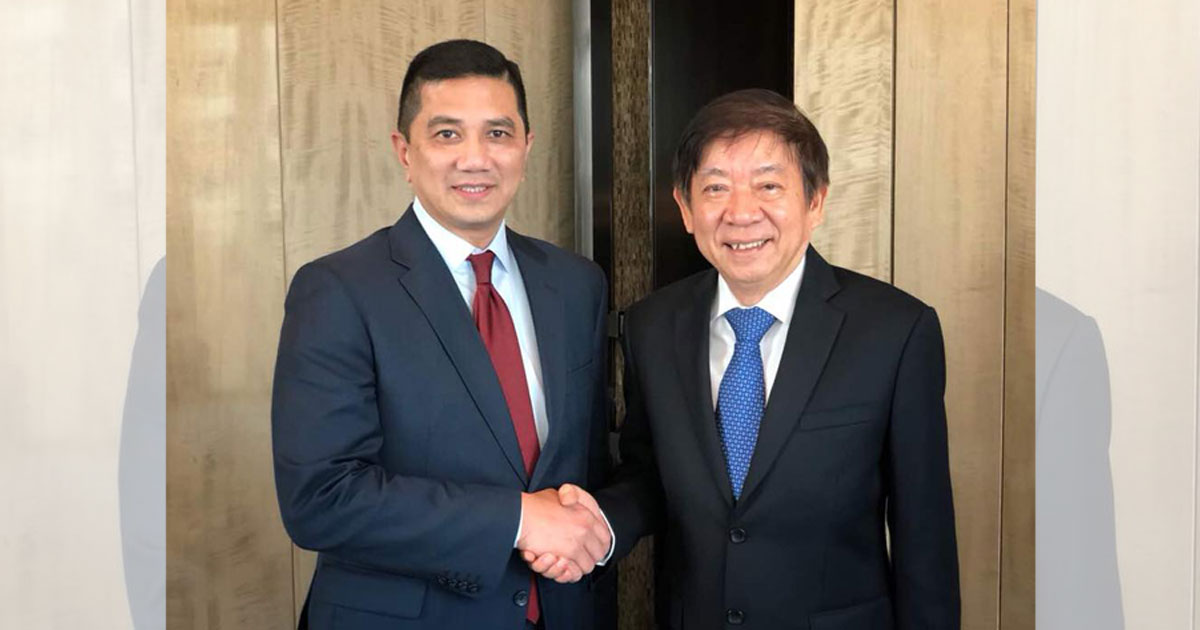After two days of carefully responding to every single free-form comments made by Malaysian Ministers, Singapore has now done what it has always performed best, through clear remarks and deeds.
This was announced by Coordinating Minister for Infrastructure and the Minister for Transport Khaw Boon Wan:
"[W]e have decided to extend the Singapore Port Limits off Tuas via Maritime and Port Authority of Singapore (Port Limits) (Amendment) Notification 2018. This extension (See the brown dotted line) is well within Singapore Territorial Waters, and tracks the eastern boundary of the 1999 Johor Bahru Port Limits. The Gazette takes effect from today."
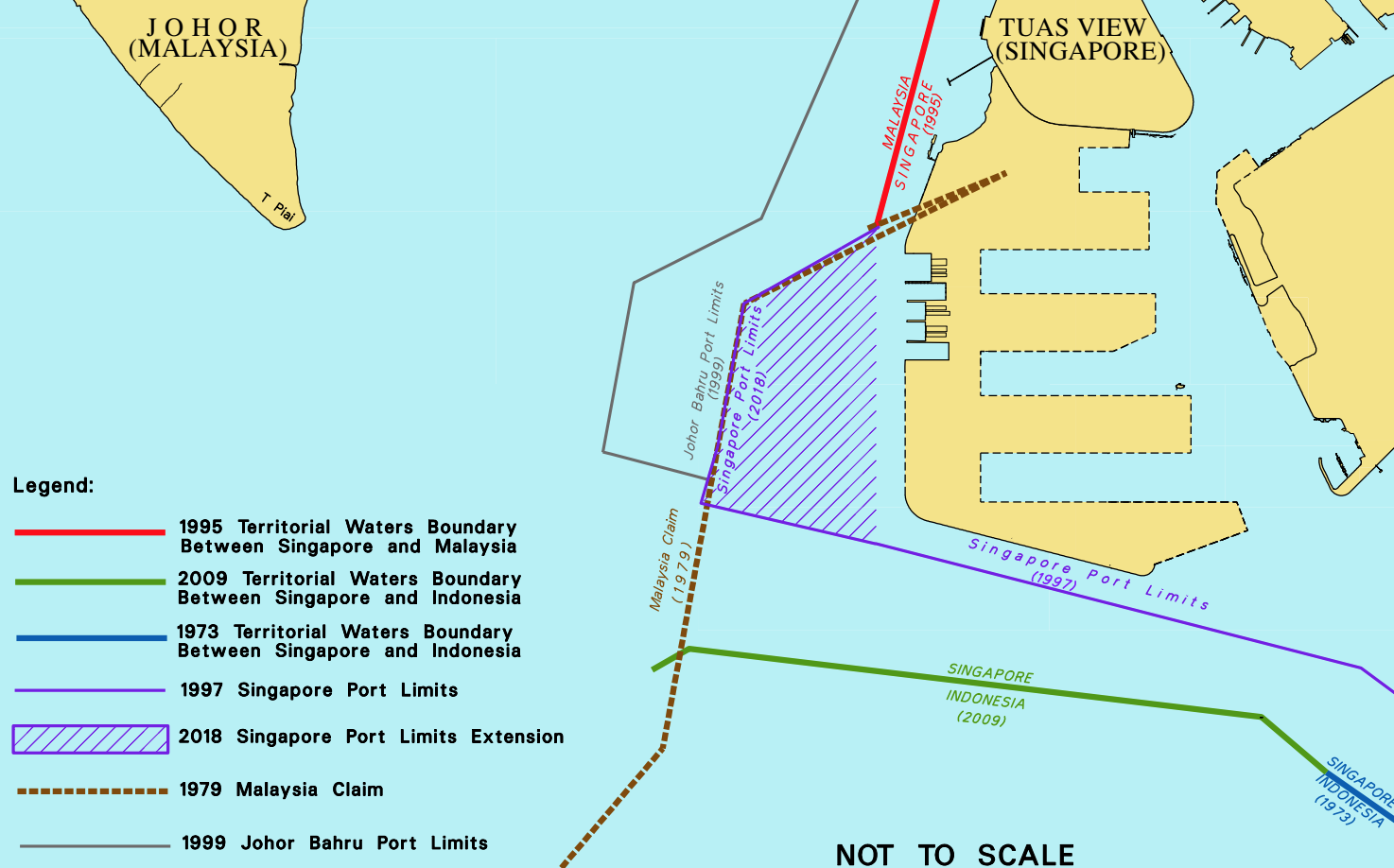 Source: Ministry of Transport
Source: Ministry of Transport
More importantly, Khaw delivered a speech on Dec. 6 that reveals Singapore's unabashed desire for a peaceful resolution to conflicts and Malaysian leaders' aspirations for a new and fresh relationship.
Here is the full speech, with our comments in bold.
Khaw's Speech
First, Khaw provided the historical context of what has happened since 1979.
In that year, Malaysia published a map that extended the boundary lines of Malaysian territorial waters to both the east and west of Singapore, and intruded on Singapore’s port limits.
1. In 1979, Malaysia published a map (Chart 1) showing the limits of the territorial waters which it claimed. This included its claim on Pedra Branca, as well as on areas at the eastern and western approaches to Singapore. The boundary lines that Malaysia claimed at the western approach to Singapore intruded into the port limits of Singapore. Singapore protested to Malaysia to reject its claim on Pedra Branca. Singapore also stated categorically that these new boundary lines violated Singapore’s sovereignty and were unacceptable to Singapore.
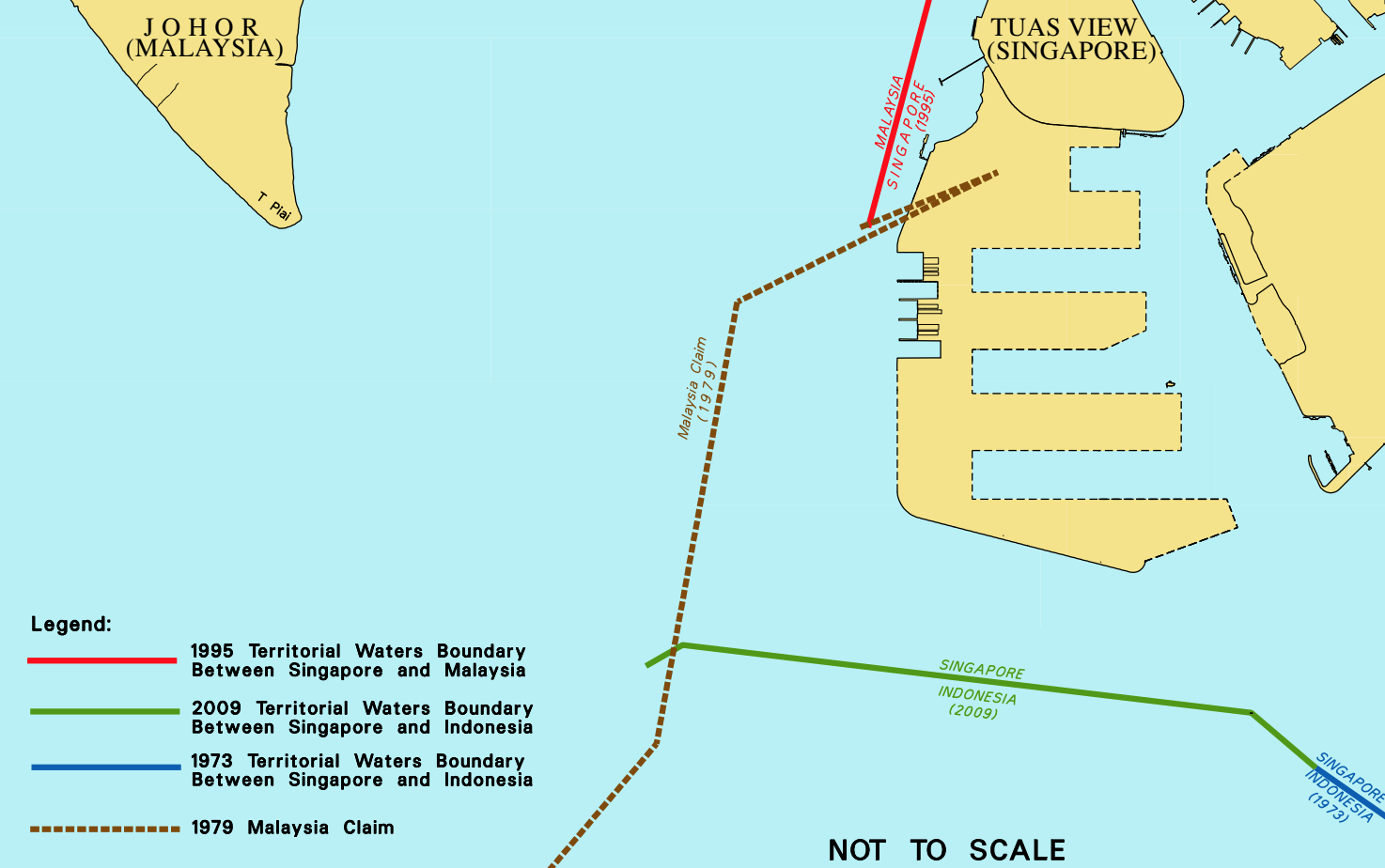 Chart 1, Source: Ministry of Trade
Chart 1, Source: Ministry of Trade
2. Nevertheless, in 1987, Malaysia went on to publish Johor Bahru Port Limits that followed this claimed boundary line. In 1999, they made slight amendments to these port limits. Since then, for twenty years, the 1999 Johor Bahru Port Limits have remained intact (Chart 2). Both the 1987 and the 1999 Johor Bahru Port Limits stayed fully within what Malaysia had since 1979 claimed was their territorial boundary.
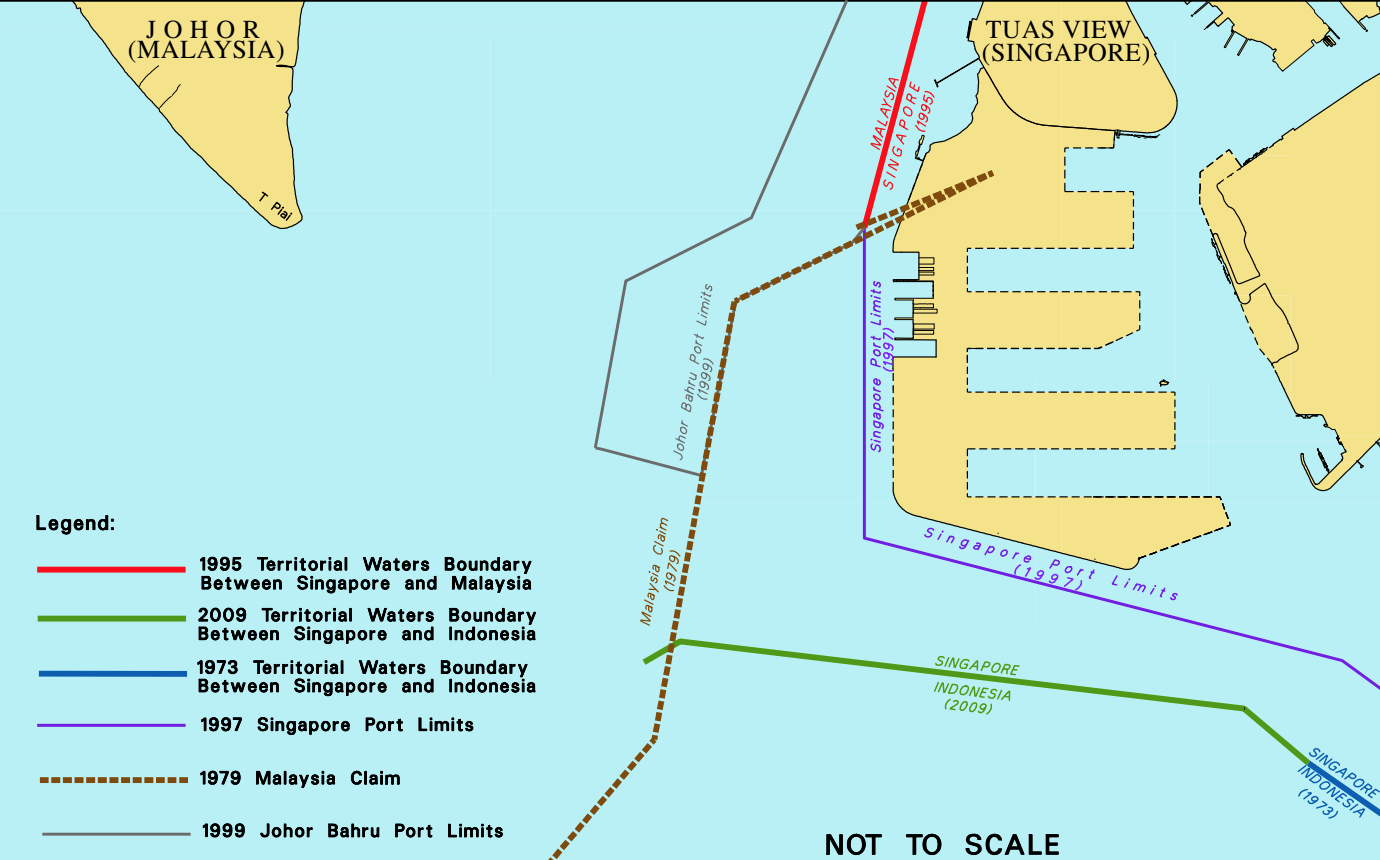 Chart 2, Source: Ministry of Trade
Chart 2, Source: Ministry of Trade
3. But on Oct. 25, 2018, Malaysia issued Federal Government Gazette P.U. (B) 587 “Declaration of Alteration of Port Limits for Johore Bahru Port”. This unilaterally and arbitrarily extended the Johor Bahru Port Limits (Chart 3). Quite apart from the fact that Singapore has never accepted their 1979 territorial claims, the recent purported extension of the Johor Bahru Port Limits goes beyond what even Malaysia itself claimed as its territorial waters.
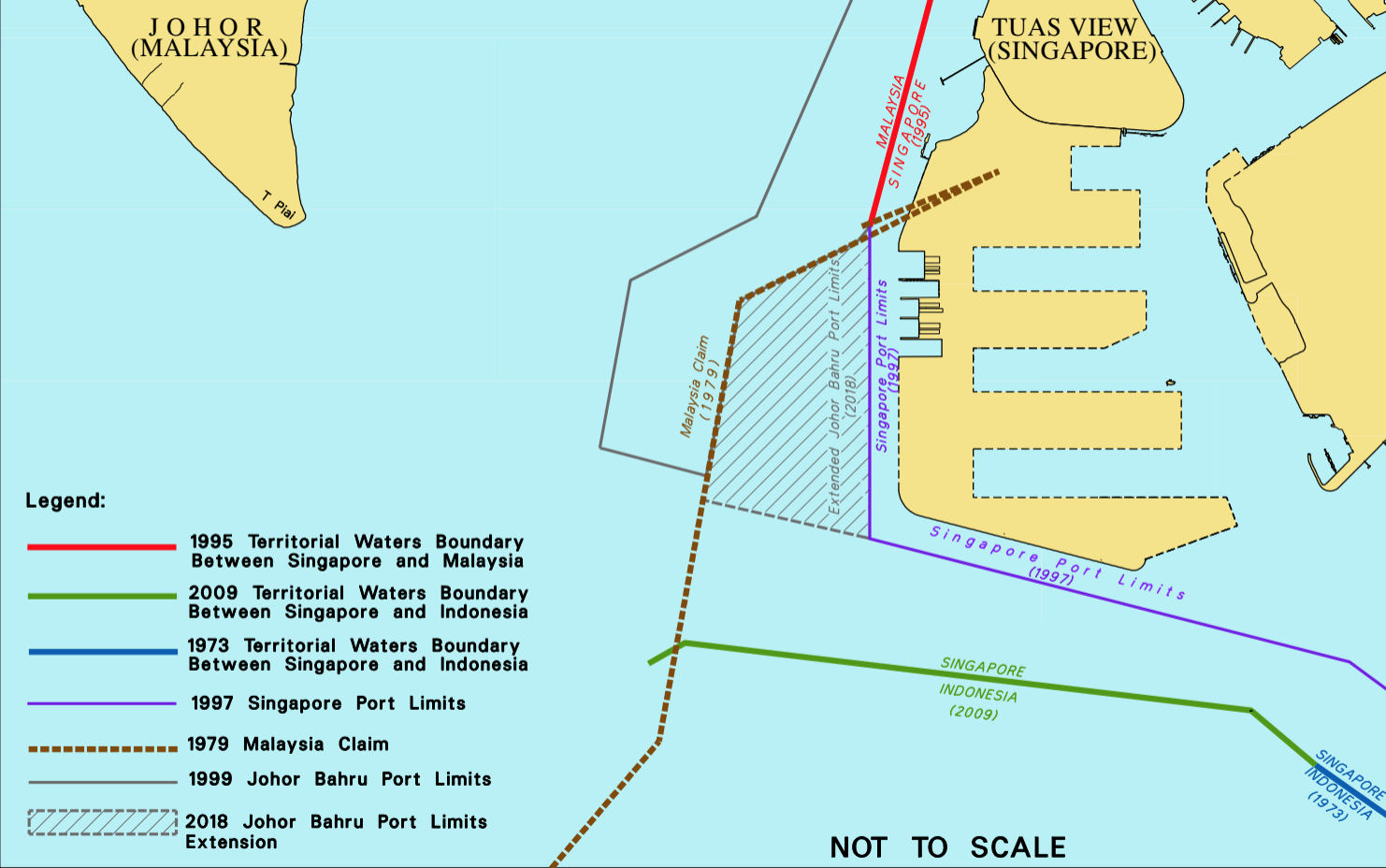 Chart 3, Source: Ministry of Trade
Chart 3, Source: Ministry of Trade
4. Since at least 1999, Singapore has been exercising its jurisdiction in the waters now covered by the recent extension of the Johor Bahru Port Limits. We have been patrolling the area regularly, and protested any intrusions or unauthorised activities. Malaysia has never laid claim to these waters, or protested our actions there. Now, out of the blue, Malaysia is claiming these territorial waters that belong to Singapore. Without any prior consultations, Malaysia is seeking to alter unilaterally the long-standing status quo in the area.
Second, Khaw expressed what the Singapore government has done so far behind the scenes.
The Singapore government raised three Third Person Note (a third person note is a diplomatic correspondence prepared in the third person and unsigned), and Khaw also raised the issue with the Transport Minister in Bangkok.
5. This is a blatant provocation and a serious violation of our sovereignty and international law.
6. On Nov. 5, 2018, Singapore issued a Third Person Note (TPN) via demarche, requesting that Malaysia immediately amend the Federal Government Gazette to reflect the sovereignty of Singapore over these waters. On Nov. 9, 2018, I raised this issue with my counterpart Minister Anthony Loke in Bangkok.
7. Despite our protests, Marine Department Malaysia (MMD) went ahead to publish Port Circular No. 88/2018 dated Nov. 11, 2018, and Notice to Mariners No. 164/2018 dated Nov. 22, 2018. Both documents notify the shipping community of the expanded Johor Bahru Port Limits. These further actions showed that Malaysia had disregarded our earlier TPN. Singapore therefore issued a second TPN via demarche on Nov. 29, 2018 to protest the Port Circular and Notice to Mariners.
Subsequently, Khaw stated a clear fact - Malaysia has made 14 intrusions into Singapore territorial waters.
8. Malaysian Government Vessels have since been continually intruding into Singapore Territorial Waters off Tuas (Chart 4). So far there have been 14 intrusions. Singapore had protested the repeated intrusions via three TPNs.
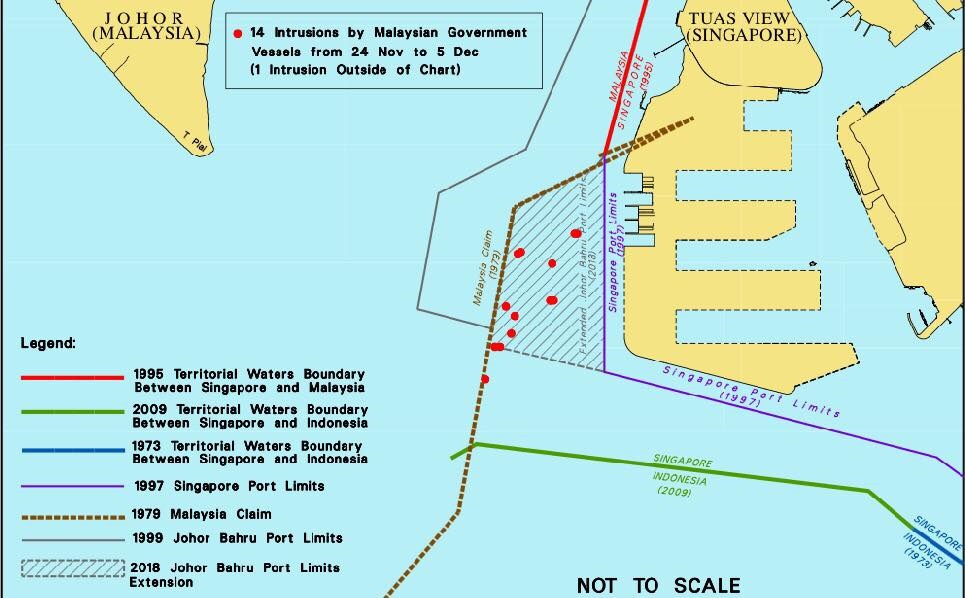 Chart 4, Source: Ministry of Trade
Chart 4, Source: Ministry of Trade
Now, Khaw would recap what has happened across the causeway yesterday.
He explained what the Malaysian government has done, in terms of issuing a media statement and a reply to Singapore's first TPN.
Malaysia's reply also proposed that officials from both sides meet.
But Khaw wanted Malaysian Government vessels to return to the status quo before Oct 25, 2018.
9. Yesterday (Dec. 5, 2018), Malaysia issued a media statement arguing that Singapore cannot claim the area as its territorial waters on the basis of its reclamation works in Tuas in recent years. In 1979, when Malaysia published its map, it did not consult Singapore before drawing its territorial claim line. In fact, in 1979 no reclamation at Tuas had taken place. So the Malaysian unilateral territorial claim of 1979 (which we do not recognise) could not possibly have taken into account any reclamation by Singapore. Their new Johor Bahru Port Limits extend beyond Malaysia’s own territorial claim line, and Malaysian ships have crossed this line to enter Singapore waters.
10. Yesterday Malaysia also replied to Singapore’s first TPN issued a month earlier (on Nov. 5, 2018). In their reply, Malaysia disagreed that the altered Johor Port Limits had encroached on Singapore Territorial Waters off Tuas, and emphasised that the Malaysian Government Vessels were patrolling the territorial waters of Malaysia.
11. Malaysia’s reply also proposed that officials from the two sides meet to work towards an amicable resolution. Singapore naturally agrees to this and will follow up. It has always been our view, ever since Malaysia published its first map in 1979, that the boundary line in this area can only be settled in accordance with international law and practice, through consultations between the governments involved. Meanwhile, Malaysian Government vessels should cease their intrusions and return to the status quo before 25 Oct 2018.
Below are examples of the intrusions into Singapore's territorial waters by Malaysian Government vessels.
12. Our security agencies will continue to patrol the area, and respond to unauthorised activities on the ground. They have so far responded with restraint against aggressive actions by the Malaysian Government Vessels. But Singapore cannot allow our sovereignty to be violated, or new facts on the ground to be created. Therefore, if it becomes necessary, we will not hesitate to take firm actions against intrusions and unauthorised activities in our waters to protect our territory and sovereignty.13. Countries do amend their port limits from time to time. But they must do so in a way that does not contravene international law, or infringe on the sovereignty of another country. Singapore has amended our port limits before. The last time we did was in 1997.
14. In view of these recent provocative developments, we have decided to extend the Singapore Port Limits off Tuas via Maritime and Port Authority of Singapore (Port Limits) (Amendment) Notification 2018. This extension (Chart 5) is well within Singapore Territorial Waters, and tracks the eastern boundary of the 1999 Johor Bahru Port Limits. The Gazette takes effect from today.
 Chart 5, Source: Ministry of Transport
Chart 5, Source: Ministry of Transport
Khaw now highlighted the significance of the violation as a "serious new issue" for bilateral relations. Crucially, he noted that PM Lee had flagged this issue as "one that could affect our bilateral relationship".
15. This violation of Singapore’s sovereignty is a serious new issue in our bilateral relations with Malaysia. Singapore seeks friendly relations and close cooperation with Malaysia. Prime Minister Mahathir has just visited Singapore in November, and held fruitful discussions with Prime Minister Lee. PM Lee flagged this issue with PM Mahathir, as one that could affect our bilateral relationship. Unfortunately, further developments since then have made the situation more serious.Interestingly, PM Mahathir shared a Facebook post of his November visit to Singapore today, thanking and praising PM Lee, at around the same time as when Khaw delivered his speech.
In this line, Khaw stated unequivocally Singapore's position with Malaysia.16. Our position with Malaysia has always been clear and consistent.
a. We uphold international law and respect bilateral agreements.
b. We will protect and defend Singapore’s territorial sovereignty. Singapore will not hesitate to take firm action against intrusions and unauthorised activities in our waters.
In his conclusion, Khaw laid out a hopeful yet realistic route for both Singapore and Malaysia at a crucial juncture where tensions may escalate between both countries.
Khaw appealed to the sense of idealism and optimism from Malaysia's young ministers, who "want a fresh relationship with Singapore, without any past baggage".
He also revealed how Singapore had shown diplomatic flexibility and empathy towards Malaysia by chosing not to utilise the full legal extent of the Bilateral Agreement accorded to Singapore.
17. I am very saddened by this development. Having been in Government for 40 years, I cannot help feeling a sense of déjà vu.
18. When I discussed the High Speed Rail (HSR) Project with Minister Azmin Ali, I had a distinct feeling that the young Ministers in Malaysia want a fresh relationship with Singapore, without any past baggage. There is so much we can gain working together. I believe the citizens on both sides of the Causeway also expect the younger leadership of both sides to work together for a brighter win-win future. That is why on the HSR Project, we chose not to utilise the full legal extent of the Bilateral Agreement accorded to Singapore. Instead, Singapore worked out an alternative way to allow Malaysia to defer the HSR Project in the spirit of bilateral cooperation.
19. Nevertheless, I remain optimistic. We still seek good bilateral relations, and hope we can work together to find an amicable solution to these issues. But Singaporeans have to be fully aware of these developments. While we seek cooperation and friendship with other countries, we must never let other countries take advantage of us. When our national interests are challenged, we have to quietly but firmly stand our ground and stay united as one people.What next?
At the time Khaw spoke to the media, 3 vessels remained in Singapore's waters.
A video showed a Malaysian buoy-laying vessel - the Jabatan Laut Polaris.
According to Channel NewsAsia, buoy-laying vessels are usually used to mark territory or safety hazards and Jabatan Laut refers to the Malaysia Marine Department.
Below are the photos of the vessels.
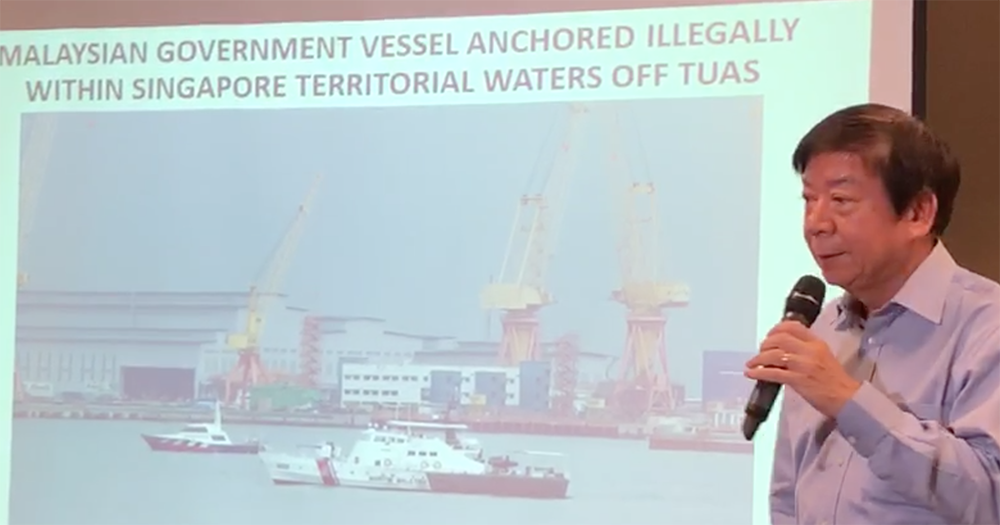 Photo by Jonathan Lim
Photo by Jonathan Lim
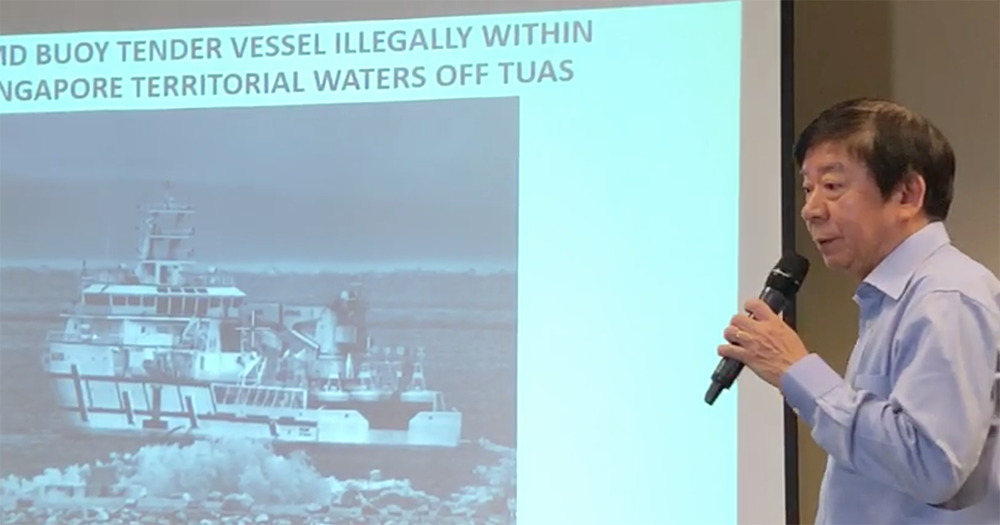 Screenshot of Video by Jonathan Lim
Screenshot of Video by Jonathan Lim
Ball's in Malaysia's court
When asked by the media what would Singapore do if the vessels remained in Singapore's waters, Khaw said:
"Leave our waters. It's as simple as that. Go back to the status quo before October 25th."
It would be up to the Malaysians to decide how they would respond to Khaw's statement.
If you like what you read, follow us on Facebook, Instagram, Twitter and Telegram to get the latest updates.
